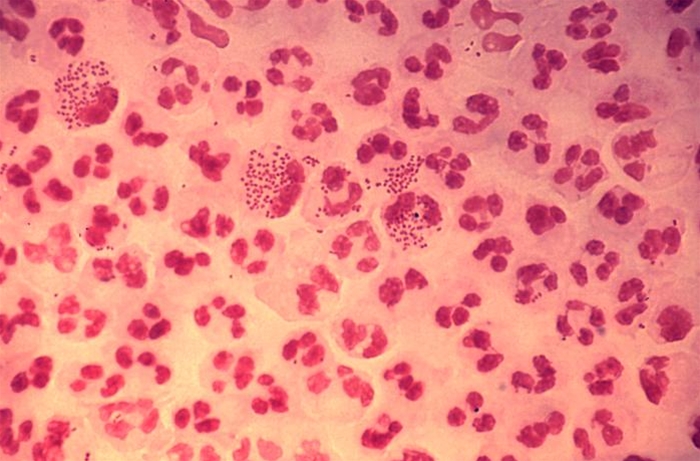Facts About Gonorrhea
- Gonorrhea is a sexually transmitted disease, where one is infected with a bacterium
- Gonorrhea often produces pain on urination and yellow discharge from the urethra, vagina or rectum (after anal sex)
- Gonorrhea can be effectively treated with antibiotics
- Condoms prevent becoming infected with gonorrhea
- Gonorrhea may also infectious by oral sex
What is gonorrhea?
Gonorrhea is a sexually transmitted disease caused by the bacterium Neisseria gonorrhoeae. The symptoms occur 2-7 days after infection.
Typical symptoms of gonorrhea are:
- Pain during urination and yellow-green discharge from the urethra and vagina, possibly. discharge from the rectum (after anal sex)
- Fever, sometimes pain and swelling in the large joints
- By anal, and oral bacterium can be infected to the mucosa of the rectum, respectively and neck
- In women, inflammation of the urethra and cervix spread to the fallopian tubes . This may lead to pelvic inflammatory disease with sharp pains in the abdomen
- In rare cases can cause a boil (abscess) at the vaginal entrance, or by the urethra.
- In men, there are also inflammation of the epididymis or inflammation of other glands in the area, such as prostate
How common is gonorrhea?
The incidence of gonorrhea are volatile and rising. Detected about 800 cases annually in South Africa.
What causes gonorrhea?
Gonokokbakterien transmitted sexually and leads to inflammation of various mucous membranes, most commonly the lining of the urethra and cervix. The immune system in the body may form so-called antibodies to the bacterium, and if the antibodies find their way into the joints and eyes may develop Reiter’s syndrome , which is an inflammation of the joints and eyes caused by gonorrhea or other infections such as chlamydia.
Infection occurs through unprotected sex. There is an increased incidence of gonorrhea among men who have sex with men, and men who have had sexual contacts abroad.
What are the symptoms of gonorrhea?
The symptoms occur approximately 2-7 days after infection exposure. Typical symptoms are a burning sensation when urinating and discharge in men and in women also vaginal discharge. Udflåddet is often yellowish and plentiful.
After anal sex can get pain in the rectum and vaginal discharge away.
What symptoms should pay particular attention to?
Yellowish discharge and burning during urination.
How is it diagnosed?

The physician will look into the urethral meatus and cervix in order to look for signs of inflammation (illustrated above with inflammatory cells and gonko bakterier). If necessary, examine the rectum and throat.
Also be taken in both sexes samples from the urethral meatus, and optionally the anal and throat, for the cultivation and detection of gonokok bakterien. In women also made sample from the cervix.
It is routine, it would be at the same time are sampled for detection of Chlamydia bacterium – ca. 15% of all with gonorrhea are also chlamydia infection.
The doctors will offer help with contact tracing, thus trying to find out who the patient’s sexual partners who may be infected. At the same time the doctor will provide information on how to avoid becoming infected with gonorrhea.
Chlamydia bacterium , which is transmitted sexually, is a frequent cause of urethritis in men and pelvic inflammatory disease in women than gonorrhea.
How is the condition?
Gonorrhea is treated with antibiotics. There are various alternatives that can be used. Antibiotics kill the bacteria.
All offered to meet to control one to two weeks after treatment to check the treatment effect, and to see if the bacteria were sensitive to the antibiotics that were given.
How is long-term prospects?
It takes 2-7 days after you are infected, the symptoms appear. The infection provides no symptoms in about half of the women and in approximately 10% of men with gonorrhea, yet the risk of complications and further infection present.
Complications that can occur as a result of gonorrhea are:
|
By treating early can reduce the risk of complications arise.
How do I avoid or aggravate gonorrhea?
The condom protects against infection with gonorrhea. It is important to note that gonorrhea can also be infected through oral sex. Sexual partner (s) to be examined and treated, if the sample is positive for gonorrhea. You should not have sex until you are have finished treatment AND control podning is completed, the result is no sign of gonorrhea.
